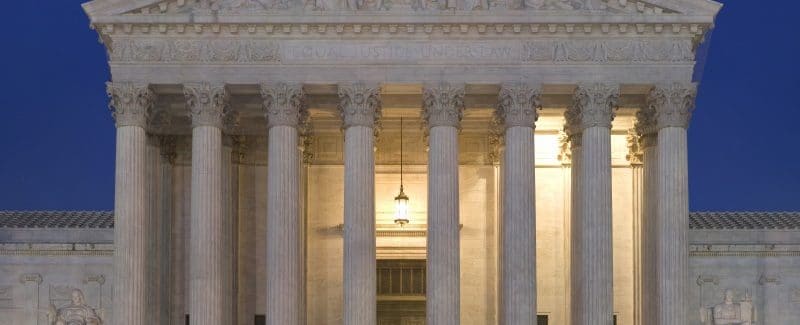
Decisions rendered by the U.S. Supreme Court reverberate throughout our society and political system. In addition to actual decisions and the written opinions that accompany them, the Court sometimes has a major impact on public policy by choosing not to hear a case. One example of the latter happened last month when the Court declined to hear a lawsuit initiated by a number of Republican state attorneys general that sought to put a stop to the Biden Administration’s efforts to assign a social cost to carbon dioxide emissions.
From the point of view of public policy, it would have been of great benefit to our country if the Supreme Court had taken up this case and ruled against the Administration. The Republican attorneys general are more than justified in distrusting the process by which Team Biden would calculate a social cost to CO2 emissions. The Biden bias has been evident since his first day in office when he hastily reauthorized something called the “Interagency Working Group of the Social Cost of Greenhouse Gases.” Federal regulatory agencies are required to conduct cost-benefit analyses of major regulations. Notice there are two sides to such analyses – the costs and the benefits. But notice the name of Biden’s working group: “Social Costs” are specified, but there is no mention of “social benefits” anywhere. Team Biden is fixated on the alleged costs of CO2 and not interested in weighing any social benefits of that trace atmospheric gas.
Does CO2 have any benefits? Yes, indeed, and they are considerable. The human-assisted CO2 enrichment of Earth’s atmosphere over the past four or five decades has led to a greening of the planet—an increase of land featuring vegetation about twice the size of the continental United States. Climate change expert Bjorn Lomborg says that land appears to be greening by an amount equivalent to “three Great Britains” per year. Growing seasons have lengthened and agricultural productivity has increased (quite helpful when considering a global human population of eight billion).
Furthermore, since “cold weather kills 20 times as many people as hot weather” according to the English medical journal The Lancet, “overall weather-related human fatalities decline when the climate warms.” The modest increase in global temperatures of approximately two degrees since the end of the Little Ice Age in the 19th century has been a boon for human health. CO2 is benign and beneficent; hence, the absurdity of the US government classifying it as a pollutant.
I wrote 15 years ago that the formal classification of CO2 as a pollutant would open a Pandora’s box of silly, counterproductive policies, and that has certainly been the case. Today, in the face of abundant evidence that CO2 has been beneficial rather than harmful, the political left is seeking to force Americans to drive more costly (both in terms of environmental degradation as well as in terms of dollars and cents) EVs and is threatening to destabilize our electric grid system by replacing reliable sources of energy (yes, fossil fuels as well as nuclear) with more costly unreliable intermittent sources of energy (wind and solar). Even as the costs of these alternate technologies can be seen to be rising faster than anticipated, making it clear that the only way to continue to force the transitions to these allegedly “green” alternatives will be additional massive expenditures by Uncle Sam, the left is doubling down, refusing to consider abandoning their economically and environmentally destructive course.
Personally, I would have been delighted if the Supreme Court had taken up the lawsuit filed against Team Biden’s CO2 quackery, but I must admit that the Court made the right decision. I admire the Court’s adherence to judicial consistency.
Look at the 2022 Dobbs case. There, the Supreme Court overturned Roe v. Wade on the grounds that the Court itself had usurped the legislative prerogative to write laws governing abortion. Similarly, in last year’s West Virginia v. EPA decision, the Court corrected another usurpation of the legislative prerogative – this one by the EPA – ruling that EPA lacked statutory authority to essentially dictate what fuel sources electricity-generating utilities must use.
It is very encouraging for those who believe in the rule of law to see the Supreme Court take a clear stand that each branch of government must stay in its own lane and restrict itself to exercising only the powers and responsibilities assigned to its own branch. For the Court to have reined in EPA’s dubious machinations would have paid huge economic dividends, but the Court believed that this wasn’t their call.
Essentially, the Court is saying is that it’s up to Congress to assert itself. A short-term measure might be for Congress to explicitly forbid the EPA from rigging the contest with bogus “cost-benefit” analyses. But how would they police that? The real solution would be for Congress to end the CO2 madness by passing a simple one-sentence law: For purposes of law and regulation, carbon dioxide is not to be classified as a pollutant.




